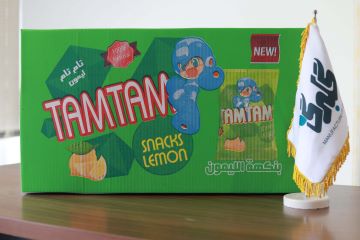Sympathy The Cartonful Manufacturing Work On From Start To Finish

The CARTON MANUFACTURING work on is an necessity manufacture that supports a wide lay out of promotion needs, from food and beverages to electronics and pharmaceuticals. Cartons are studied to protect and save goods during storehouse and transportation system while being both cost-effective and environmentally friendly. The travel of turning raw materials into destroyed cartons involves bigeminal stairs that need a blend of precision, efficiency, and quality verify. Let’s take a look at the کارتن سازی تهران work from take up to wind up.
1. Sourcing Raw Materials
The instauratio of carton production begins with raw materials, typically posterboard or furrowed fibreboard. Paperboard is made from wood pulp, which is derivative from trees. It is processed into sheets or rolls, which can be made from recycled wallpaper or virgin fibre.
For corrugated cartons, a special type of paperboard is used, where an inner level of fluted paper is sandwiched between two flat sheets of linerboard. This social system adds strength and durability, which is necessity for protective the table of contents.
2. Designing the Carton
Before the manufacturing process begins, the design of the carton is crucial. Cartons must be usefulness, cost-effective, and esthetically likeable. The design phase includes determinative the type of carton(folding cartons, intolerant boxes, or furrowed boxes) and any necessary art or branding.
Designers use CAD(Computer-Aided Design) software package to create the whole number blueprints of the box, ensuring the proper dimensions, folding lines, and graphics positioning. During this present, the type of cardboard and coating(for moisture resistance or printing purposes) is designated based on the deliberate use.
3. Sheet Preparation and Printing
Once the plan is finalized, the next step is to prepare the sheets of poster board for printing process. In the case of furrowed boxes, the linerboard and fluted wallpaper are pre-printed with the necessary artwork, Logos, and text using a variety show of printing techniques, such as flexographic or lithographic printing.
Flexographic printing is the most green method used in CARTON MANUFACTURING because it allows for high-speed, vauntingly-scale product of simpleton to designs. For more complex and high-quality prints, lithographic printing process may be used, although it is less common due to its slower travel rapidly and higher cost.
During printing, the sheets are fed into vauntingly printing process presses, where the craved images and entropy are transferred onto the posterboard. The posterboard may also submit a coating or varnishing work on to add shine, ameliorate durability, or ply wet resistance.
4. Die-Cutting and Creasing
Once printed, the paperboard sheets are stirred to the die-cutting and creasing stage. Here, the sheets are cut into their final form and scored for easy folding. A die, which is essentially a metallic element tool with acutely edges molded in the desired model, presses down onto the poster board to cut and crinkle it simultaneously.
Die-cutting ensures that the cartonful will fold right, with meticulous edges and sharply folds that make assembly quickly and easy. Depending on the complexness of the design, some cartons may need nine-fold passes through the die-cutting machine to accomplish the right shape.
5. Gluing and Folding
After die-cutting and creasing, the individual carton blanks are set up to be folded and affixed. This is a critical represent of the manufacturing work as it determines the strength and strength of the final product.
Automated folding-gluing machines are used to fold the cartons into their final exam shape and utilise glue along the flap that will hold the box together. The glue used in CARTON MANUFACTURING is often water-based to see to it it is non-toxic and environmentally friendly. Once the glue is applied, the cartons are shut to insure a secure bond.
6. Quality Control
Quality verify is a fundamental frequency aspect of the CARTON MANUFACTURING work on. Throughout the production work on, every present undergoes review to insure that the cartons meet industry standards. This includes checking for the correct dimensions, printing timber, enduringness, and functionality.
In plus to ocular inspections, physics tests such as bursting effectiveness, edge crush underground, and compression tests are performed to pass judgment the effectiveness of the carton, especially for those used in transporting heavily or weak goods.
7. Folding and Packing for Delivery
Once the cartons have been folded, glued, and inspected, they are typically flat-packed to save quad for transport. The cartons are then shapely and equipt for deliverance to the client. Depending on the intensity, cartons may be delivered in vauntingly batches to manufacturers, retailers, or distributors.
Some manufacturers also volunteer customization options, such as printing extra art, labeling, or adding caring layers for specialised publicity needs.
8. Recycling and Environmental Impact
The CARTON MANUFACTURING industry is known for being one of the most property promotion industries. Many cartons are made from recycled poster board, and after use, they can be recycled again into new wallpaper products. The work of qualification cartons, particularly corrugated boxes, has a relatively low state of affairs footmark compared to other types of promotional material, such as impressible.
Advances in recycling applied science and the use of eco-friendly inks and coatings are further enhancing the sustainability of the CARTON MANUFACTURING manufacture, ensuring that it continues to meet the growing for environmentally conscious products.
Conclusion
From sourcing raw materials to delivering ruined products, the CARTON MANUFACTURING work on is a highly orderly and effective operation. It combines technology, creative thinking, and sustainability to make a variety of promotion solutions that are both utility and environmentally amicable. As consumer demands bear on to evolve, so too does the manufacture, pushing the boundaries of innovation in cartonful design, lastingness, and sustainability.
